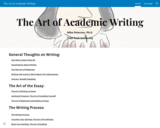
OER textbook for college composition courses.
- Subject:
- Composition and Rhetoric
- English Language Arts
- Material Type:
- Textbook
- Author:
- Mike Peterson
- Date Added:
- 10/05/2022

OER textbook for college composition courses.
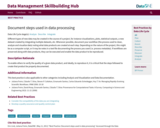
Different types of new data may be created in the course of a project, for instance visualizations, plots, statistical outputs, a new dataset created by integrating multiple datasets, etc. Whenever possible, document your workflow (the process used to clean, analyze and visualize data) noting what data products are created at each step. Depending on the nature of the project, this might be as a computer script, or it may be notes in a text file documenting the process you used (i.e. process metadata). If workflows are preserved along with data products, they can be executed and enable the data product to be reproduced.

When describing the process for creating derived data products, the following information should be included in the data documentation or the companion metadata file.
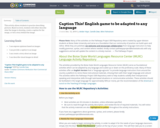
This activity allows students to practice describing pictures. Based on level, students will either describe what the image is showing, create a caption for the image, or tell a story behind the image.
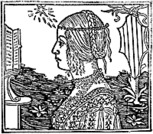
This writing assignment--The Profile Essay--requires students to use a variety of rhetorical modes to support a thesis statement.

All epidemiological investigations require some form of data description. A number of methods are available for describing data, and the most appropriate one will depend upon both the type of data available and the aims of the investigation. If these issues are not considered, useful information may be lost, or more seriously, a misleading estimate may be made.

The goal of this class is practical: to interrogate, make explicit, and thus to develop the powerful musical intuitions that are at work as you make sense of the music all around you. Reflecting, we will ask how this knowledge develops in ordinary and extraordinary ways.

Students investigate the difference between qualitative and quantitative measurements and observations. By describing objects both qualitatively and quantitatively, they learn that both types of information are required for complete descriptions. Students discuss the characteristics of many objects, demonstrating how engineers use both qualitative and quantitative information in product design.

The 11th grade learning experience consists of 7 mostly month-long units aligned to the Common Core State Standards, with available course material for teachers and students easily accessible online. Over the course of the year there is a steady progression in text complexity levels, sophistication of writing tasks, speaking and listening activities, and increased opportunities for independent and collaborative work. Rubrics and student models accompany many writing assignments.Throughout the 11th grade year, in addition to the Common Read texts that the whole class reads together, students each select an Independent Reading book and engage with peers in group Book Talks. Students move from learning the class rituals and routines and genre features of argument writing in Unit 11.1 to learning about narrative and informational genres in Unit 11.2: The American Short Story. Teacher resources provide additional materials to support each unit.

People often say that mankind should learn from history. Charles Dickens, whose books are considered classics, set his novel A Tale of Two Cities in the past. He wanted his readers to learn from the bloody French Revolution and from the widespread brutality in London. Both cities (Paris and London) offer the reader a glimpse into dark and dangerous times. As students read about Dickens's Victorian setting and learn his view of the French Revolution, they will think about what makes a just world. Students will have a chance to think about their own experiences, and, using techniques they have learned from Charles Dickens, they will do some writing that sends a message about your own world.
ACCOMPLISHMENTS
To complete the unit accomplishments, students will:
Read the Charles Dickens novel A Tale of Two Cities.
Read several short pieces, including a biography of Dickens and excerpts from other literature, to help them understand Dickens’s world and the world of the novel.
Explore new vocabulary to build their ability to write and speak using academic language.
Practice close reading and participate in several role plays and dramatic readings to help them experience the dramatic writing style of Charles Dickens.
Write a vignette and a short narrative piece, and practice using descriptive detail and precise language.
Write a reflection about the meaning of Dickens’s novel.
GUIDING QUESTIONS
These questions are a guide to stimulate thinking, discussion, and writing on the themes and ideas in the unit. For complete and thoughtful answers and for meaningful discussions, students must use evidence based on careful reading of the texts.
How does good storytelling affect the reader, and how can a good story promote change in the world?
What was the Victorian view of gender roles?
How can power be abused?
What is loyalty ? What are the limits of loyalty?
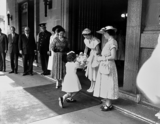
In this lesson, students will focus on grammar as it relates to this section of A Tale of Two Cities.

The 12th grade learning experience consists of 7 mostly month-long units aligned to the Common Core State Standards, with available course material for teachers and students easily accessible online. Over the course of the year there is a steady progression in text complexity levels, sophistication of writing tasks, speaking and listening activities, and increased opportunities for independent and collaborative work. Rubrics and student models accompany many writing assignments.Throughout the 12th grade year, in addition to the Common Read texts that the whole class reads together, students each select an Independent Reading book and engage with peers in group Book Talks. Language study is embedded in every 12th grade unit as students use annotation to closely review aspects of each text. Teacher resources provide additional materials to support each unit.

In our lives, we are constantly telling stories to ourselves and to others in an attempt to both understand our experiences and present our best selves to others. But how do we tell a story about ourselves that is both true and positive? How do we hold ourselves up in the best possible light, while still being honest about our struggles and our flaws? Students will explore ways of interpreting and portraying personal experiences. They'll read Chinua Achebe's novel Things Fall Apart , analyzing the text through the eyes of one character. They'll get to know that character's flaws and strengths, and they'll tell part of the story from that character's perspective, doing their best to tell an honest tale that presents their character's best side. Then they'll explore their own stories, crafting a personal narrative about an important moment of learning in his or her life.
ACCOMPLISHMENTS
Students read and analyze Chinua Achebe’s Things Fall Apart , viewing the events and conflicts of the novel through the eyes of one of the central characters.
Students write a two-part narrative project: one narrative told through their character’s perspective and one personal narrative about an incident in their own life.
GUIDING QUESTIONS
These questions are a guide to stimulate thinking, discussion, and writing on the themes and ideas in the unit. For complete and thoughtful answers and for meaningful discussions, students must use evidence based on careful reading of the texts.
How do our conflicts shape and show our character?
How can we tell a story about ourselves that’s both honest and positive?
How do definitions of justice change depending on the culture you live in?
What are ways individuals can react to a changing world? To a community that doesn’t accept us?
BENCHMARK ASSESSMENT: Cold Read
During this unit, on a day of your choosing, we recommend you administer a Cold Read to assess students’ reading comprehension. For this assessment, students read a text they have never seen before and then respond to multiple-choice and constructed-response questions. The assessment is not included in this course materials.
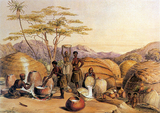
Do other people’s perceptions of us teach us anything about ourselves? What do we hide from those around us? In this lesson, students will think about how their character’s self-image differs from what others see about him or her. Then, students will begin planning their Things Fall Apart narrative.

What has “fallen apart” in this novel, and who’s to blame for this destruction? Could Okonkwo’s fate have been avoided? Could Umuofian society have held together better? How? In this lesson, students will participate in a discussion to reflect on and attempt to answer these questions and others.
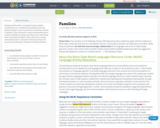
Students will be able to recognize family member classifications (i.e. Großmutter=grandma), describe family members, and accurately use vocabulary related to families. They will need to acquire information about another individual’s family and will practice describing their own family members. They will need to acquire information about a classmate’s family and they will practice describing that classmate’s family members.

Students will be able to recognize family member classifications (i.e. abuela=grandma), describe family members, and accurately use vocabulary related to families. They will need to acquire information about another individual’s family and will practice describing their own family members. They will need to acquire information about a classmate’s family and they will practice describing that classmate’s family members.
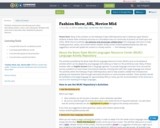
Students will practice introducing each other, describing clothes, colors, and commands. Students will learn how to describe other individual's physical features.

Each student is given Person card with information that matches other cards held by classmates. They need to ask each other questions about who they are in German so they are able to find a match. If they think they have found their match, they compare emojis to confirm. This activity can be expanded by having students describe themselves or describe each other at the beginning or end of the activity.
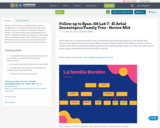
Students will be able to recognize family member classifications (i.e. abuela=grandma), describe family members, and accurately use vocabulary related to families. They will need to acquire information about another individual’s family and will practice describing their own family members. They will need to acquire information about a classmate’s family and they will practice describing that classmate’s family members.